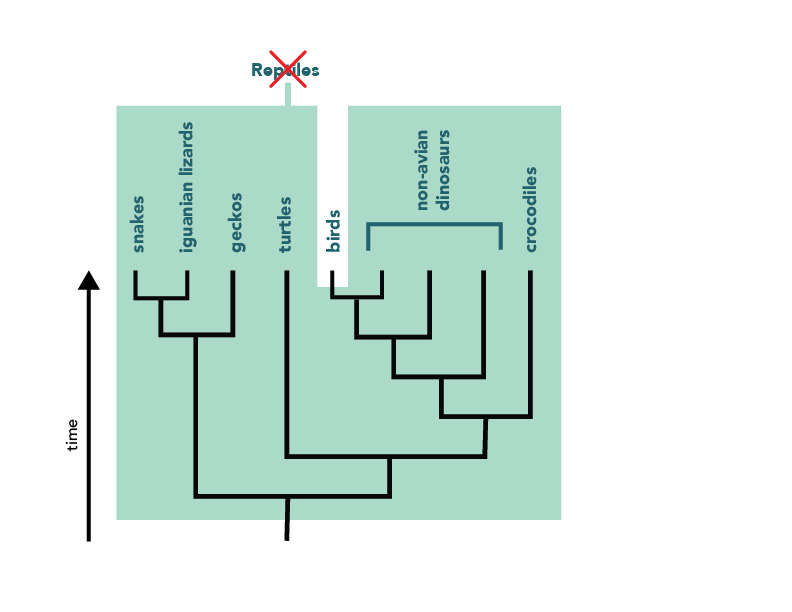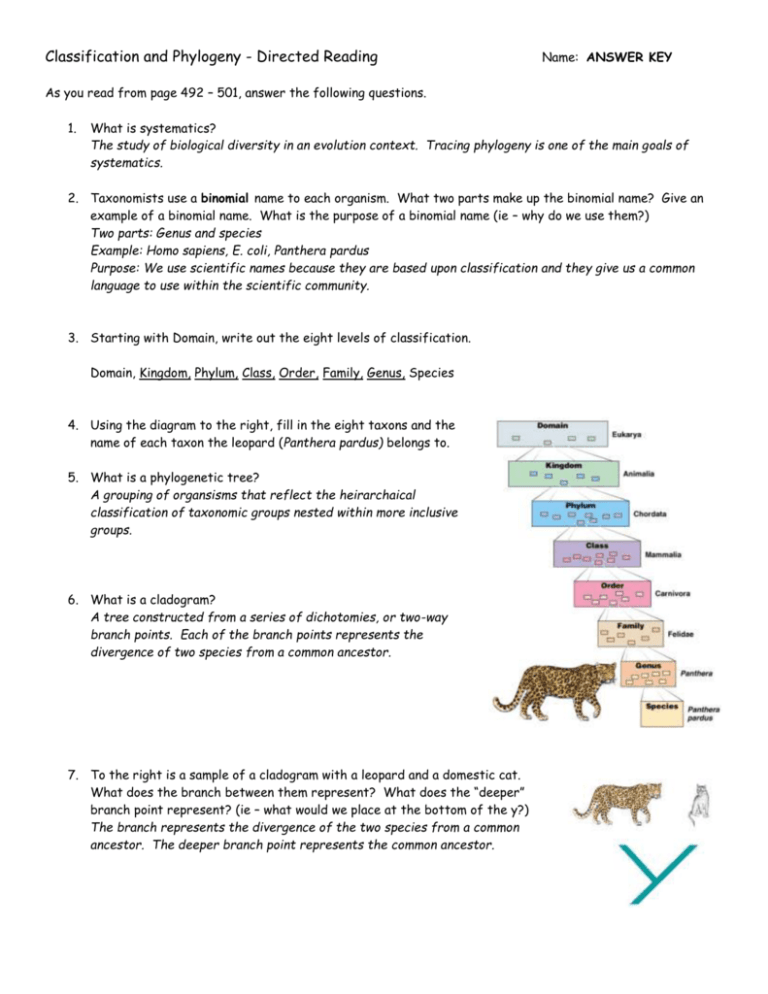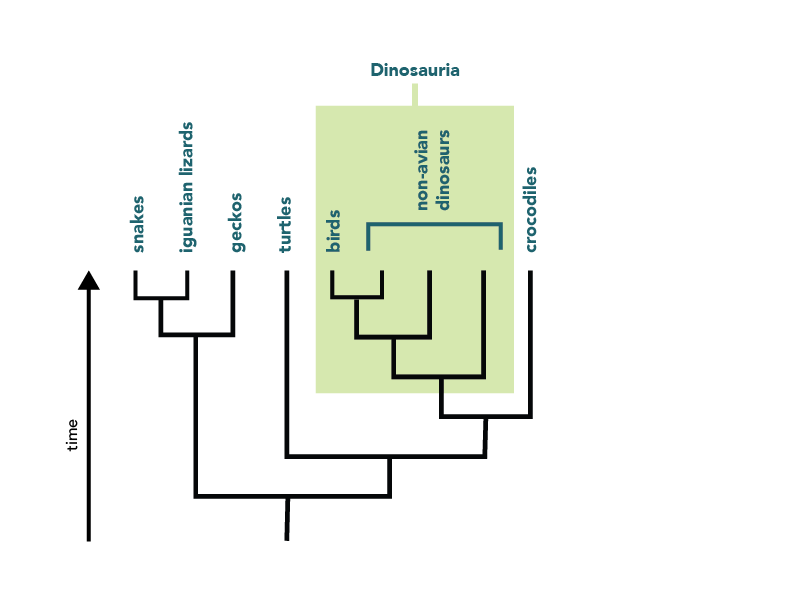Identify the taxa in the classification system devised by Linnaeus. Studies diversity of life and evolutionary relationships phylogeny 2.

Using Trees For Classification Understanding Evolution
Best tree determined by greatest amount of evidence 4.

. Taxonomyclassification should based on inferred pattern of historical relationships monophyly population genetics natural selection and. The goal of phylogenetic systematics or evolutionary classification is to group species into larger categories that reflect lines of evolutionary descent rather than. Describe the goal of phylogenetic systematics evolutionary classification.
Differentiate between synapomorphies plesiomorphies and homoplasies. Identify describe classify and name organisms based on evolutionary relationships Taxonomy. Classification however is only one aspect of the much larger field of phylogenetic systematics.
Classification and Systematics Nomenclature the first system of naming of organisms for communication purposes With the an understanding of evolution and natural selection taxonomists felt that a naming system should reflect evolutionary relationships goals of. Phylogeny leads to classification. The goal of phylogenetic systematics or evolutionary classification is to group species into larger categories that reflect lines of evolutionary descent rather than overall similarities and differences.
The goal of phylogenetic systematics is to group organisms together based on their evolutionary history not just their similarities and differences. Determine the evolutionary ancestor-descendant relationships between all. To keep the details of 1 and 2 separate nomenclature 4.
It works by analysing different taxa to find objective similarities and differences between them and using those similarities and differences to derive a hierarchical structure showing which taxa are most similar to others. Which group of organisms would have the most recent common ancestor. Systematics - The goal of systematics is to have classification reflect the evolutionary relationships of species.
The members of a clade corresponding to a genus or the members of a clade corresponding to an order. Describe the goal of phylogenetic systematics evolutionary classification. The evolutionary history of lineages.
Evolutionary classification places organisms into higher taxa whose members are more closely related to one another than they are to members of any other group. The larger the taxon the further back in time its members shared a common ancestor. Explain the difference between evolutionary classification and Linnaean classification.
Describe the goal of phylogenetic systematics evolutionary classification Members of a clade corresponding to a genus - smaller taxon than an order. The goal of phylogenetic systematics or evolutionary classification is to group species into larger categories that reflect lines of evolutionary descent rather than. Describe the goals of binomial nomenclature and systematics.
Correctly write a scientific name. Explain the difference between evolutionary classification and Linnaean classification. Common Ancestors Modern Evolutionary Classification Ch 182.
Interpret a phylogenetic tree. Up to 24 cash back phylogeny Classification based on evolutionary relationships is called phylogenetic systematics or evolutionary classification. The fundamentals of phylogenetic systematics 1 discovering evolutionary relationships by analyzing the characteristics of taxa 2 Organizing taxa into a system of nested groups containing an ancestor and all of its descendants.
Derived character Name the six kingdoms of life as they are currently. Cladistics also known as phylogenetic systematics is a relatively new way of doing systematics. Biologists are taking advantage of this by using a system of phylogenetic classification which conveys the same sort of information that is conveyed by treesIn contrast to the traditional Linnaean system of classification phylogenetic classification names only clades.
1 binomial nomenclature 2 hierarchical classification Fig 257 3 taxon taxa 4 only species exist in nature as biologically cohesive units. Evolutionary classification places organisms into higher taxa whose members are more closely related to one another than they are to members of any other group. The goal of phylogenetic systematics or evolutionary classification is to group species into larger categories that reflect lines of evolutionary descent rather than.
Systematics and evolutionary biology. Differentiate individual organisms and establish the basic units. Define the following a.
Once constructed such trees can then be converted into classification schemes which are a dynamic way of representing our understanding of. What are the goals of modern systematics. Describe the goals of binomial nomenclature and systematics.
Synapomorphies determine common ancestry 3. To arrange these units in a logical hierarchy that permits easy and simple recognition in the basis of similarity classification 3. Describe the purpose of classification and systematics.
Patterns of relat-edness are usually displayed by biologists in branching diagrams called trees eg phylogenetic genealogical or evolutionary trees. Clearly evolutionary trees convey a lot of information about a groups evolutionary history. Phylogenetic systematics or evolutionary classification.
Relationships interpreted as sister-lineages clades 2. While classification is primarily the creation of names for groups systematics goes beyond this to elucidate new. Two goals of systematics phylogeny Taxonomy 1.
Systematics is an attempt to understand the evolutionary interrelationships of living things trying to interpret the way in which life has diversified and changed over time. Identify the taxa in the classification system devised by Linnaeus. Relate common descent and a natural group to the classification system.
Place the levels of the taxonomic hierarchy in the correct order.


0 Comments